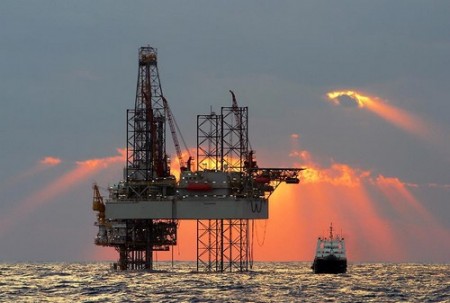

This week in New York, the state parties to the UN Convention on the Law of the Sea (UNCLOS) are meeting for the 21st time since the convention’s conclusion in 1982. Major items on the agenda are the reports of the ongoing work of the Convention’s three main organs: 1) the International Tribunal for the Law of the Sea (ITLS), which interprets the Convention and adjudicates disputes 2) the Commission on the Limits of the Continental Shelf (CLCS), which evaluates geological and oceanographic data, and 3) the International Seabed Authority (ISA), which organizes and controls activities related to the sea floor, which lies beyond national jurisdictions.
Three main items are currently before the Tribunal: a boundary dispute between Bangladesh and Myanmar in the Bay of Bengal (of special relevance to Conoco Phillips); the M/V Louisa case, a dispute arising from Spain’s detention since 2006 of the eponymous research vessel, which was flying the flag of St Vincent and the Grenadines in Spanish coastal waters while conducting scientific surveys of the sea floor; and a request for an advisory opinion from the Tribunal on the status of state parties sponsoring private activities on the sea floors outside national jurisdictions, a case arising from commercial activities proposed by Nauru Ocean Resources Inc. and Tonga Offshore Mining Ltd.
While these are hardly the issues making international headlines – and the above two companies remain unlikely, to say the least, to ever become major global players in natural resources – the Law of the Sea can be a genuine battleground of great power politics.This week before the CLCS are a multitude of fascinating issues, perhaps the most significant of which is an Indian initiative to more than double the range of its Exclusive Economic Zone (EEZ). The more than 6,000 pages of “sedimentary and scientific evidence” that the Indian delegation will submit is the product of a decade-long project aimed to demonstrate that the continental shelf of the Indian subcontinent extends an additional 150 nautical miles (nm) beyond the conventional boundaries (of 200 nm), which forms the basis for the determination of the EEZ. Initial reports suggest that it will succeed.
As competition for scarce energy resources intensifies in the coming years, exclusive economic rights to an additional 150 nautical miles of ocean – and ocean-floor – is not to be taken lightly. But India is of course not alone in recognizing this. China, for one, has long understood that securing energy resources sufficient to sustain its astronomical growth is critical to its geopolitical future. One of the places it’s gambling on is the floor of the so-called South China Sea – including the contentious Reed Bank, which at nearly 600 miles from the Chinese coast is almost in ‘cannon range’ of the Philippines (a key ally, incidentally, of the United States).
And China’s approach to the legal issues could not contrast more starkly with India’s. In a pattern that will be familiar to students of the politics of international law, China has made only gestures at justifying its claims under UNCLOS (which, unlike the US, it has signed and ratified). According to two prominent analysts, it is acting more like the proverbial “800-pound gorilla” in the room than “a responsible member of the international community.” Compared to India’s 6,000 pages of meticulous oceanographic argumentation, China, in 2009, submitted just a single crude map to support its claims, an implication being that it may be developing a preference for blunter instruments.
As events last month in the Spratlys suggest, the competing claims to the Sea, and the hydrocarbons it may be hiding, have the potential to destabilize the region. While these issues are not before the state parties to UNCLOS this week, many of those parties, the US and the ASEAN countries obviously included, think they should be. Though perhaps the matter will ultimately be settled not in New York but at The Hague, before the International Court of Justice.
While disputes over economic rights to the seas were a significant impetus to the early development of international law, their strategic economic importance has historically been considered secondary to their strategic military importance – a point made perhaps most classically in Alfred Thayer Mahan’s iconic tome, The Influence of Sea Power upon History. The evidence of recent decades, and of recent months, suggests, however, that this may be changing – just in case you needed another reason to care about the deliberations of the states parties to UNCLOS this week.

